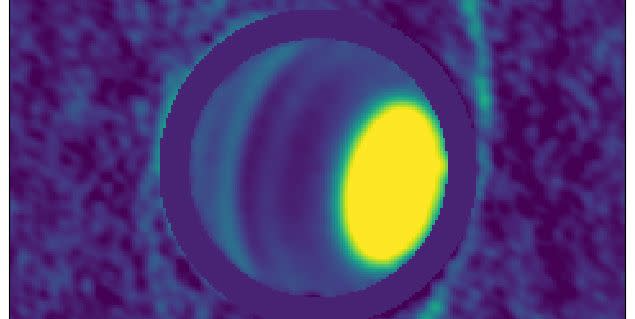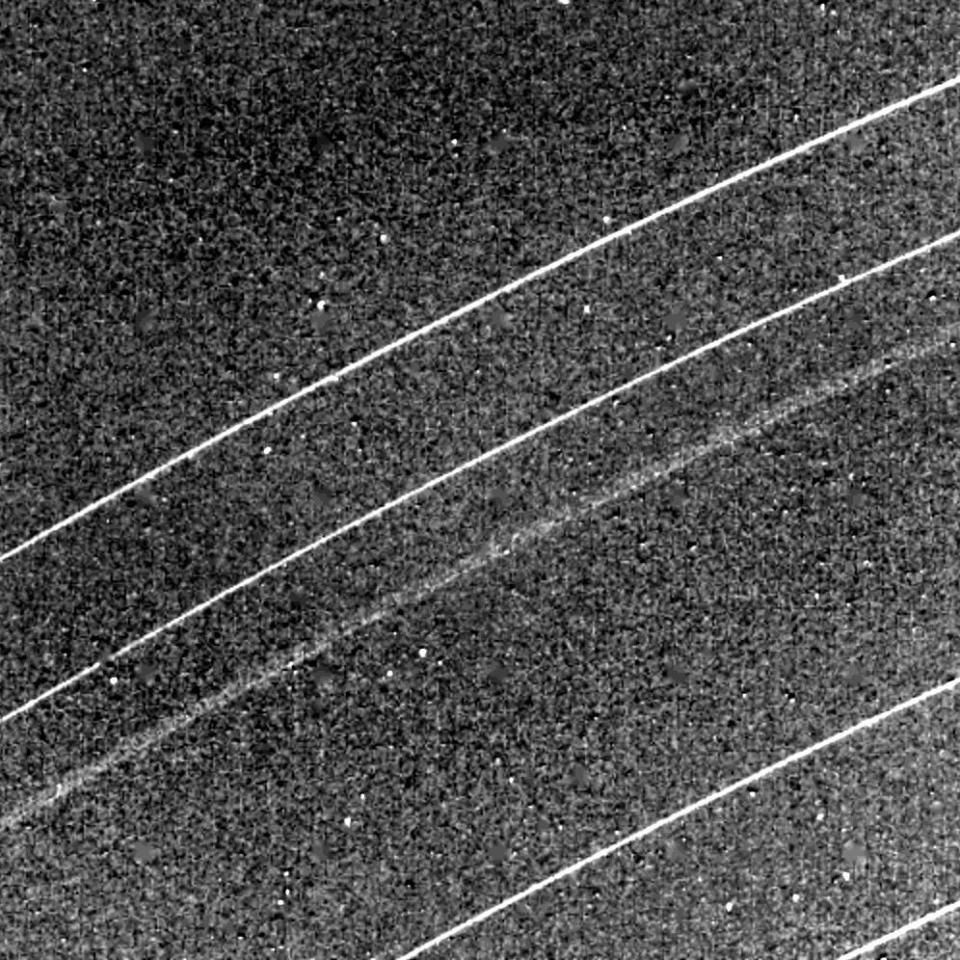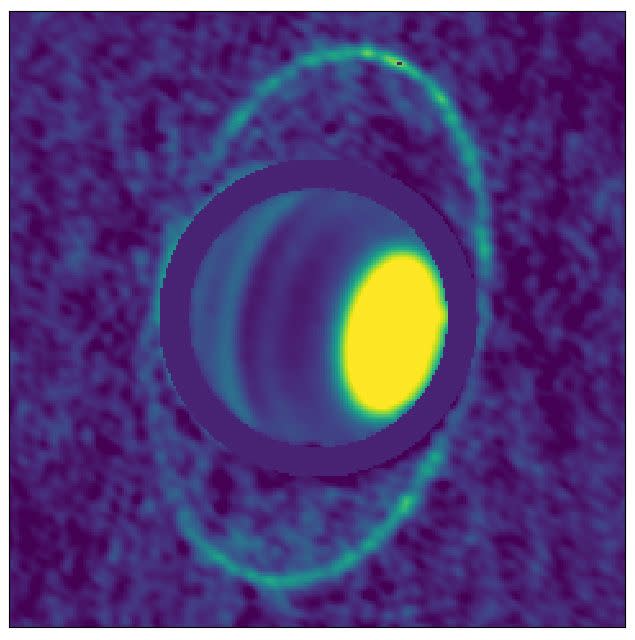Images of Uranus' Frozen Rings Only Deepen a Decades-Long Mystery

Observations using Chile's ALMA and VLT telescopes reveal insight into Uranus' perplexing ring system.
The chilly rings' temperature was measured to around -320 degrees Fahrenheit and are much darker than other ring systems.
The first of Uranus' 13 rings was first discovered in 1977.
Sparkling ring systems may be the best kept secret in solar system. Jupiter, Saturn, Uranus, and Neptune all have rings. Some, like Saturn's, are more visible. Others, like the Neptunian and Jovian ring systems, are less so.
Astronomers didn't discover Uranus' ring system until relatively recently, in 1977, as they're tough to spot in visible or near-infrared light. In 1986, the Voyager 2 spacecraft whizzed by Uranus and snapped a series of images of the planet's rings, revealing a set of thin lines of dust. So far, astronomers have counted 13 rings circling the planet with bits of dust interspersed between. In recent years, astronomers have begun to piece together a sharper view of one of Uranus' most mysterious features.

In 2019, an international team of researchers from UC Berkeley and the University of Leicester in the U.K. used the Atacama Large Millimeter/submillimeter Array (ALMA) and the Very Large Telescope (VLT) high up in Chile's Atacama desert in order to take the pictures of the peculiar ring system.
They made a series of critical new observations about Uranus rings, which were published in The Astronomical Journal. The team finally got an accurate measurement of the rings' temperature. Thermal emissions revealed the rings were extremely chilly, around 77 Kelvin—that's about -320 degrees Fahrenheit.

Unlike Saturn's rings, which are highly visible, Uranus' rings are dark, as if made from charcoal, according to a statement. The measurements also revealed key differences between the composition of Uranus' ring system and the ring systems of other planets in our solar system. Compared to Saturn and Uranus, the particle sizes of Jupiter and Neptune's rings are small and uniform.
“Saturn’s mainly icy rings are broad, bright and have a range of particle sizes, from micron-sized dust in the innermost D ring, to tens of meters in size in the main rings,” astronomer Imke de Pater of UC Berkeley said in a statement at the time. “The small end is missing in the main rings of Uranus; the brightest ring, epsilon, is composed of golf ball-sized and larger rocks.”
But something strange is happening in Uranus' Epsilon ring. These latest observations revealed that there isn't much dust. "Something has been sweeping the smaller stuff out, or it’s all glomming together," astronomer and graduate student Edward Molter of UC Berkeley said. "We just don’t know."
Some rings form from the debris of cataclysmic collisions that occur in a planet's orbit. Did they form all at the same time in one giant cataclysmic impact or did they each form separately.
More observations are needed to puzzle together the rings' origin story.
You Might Also Like

